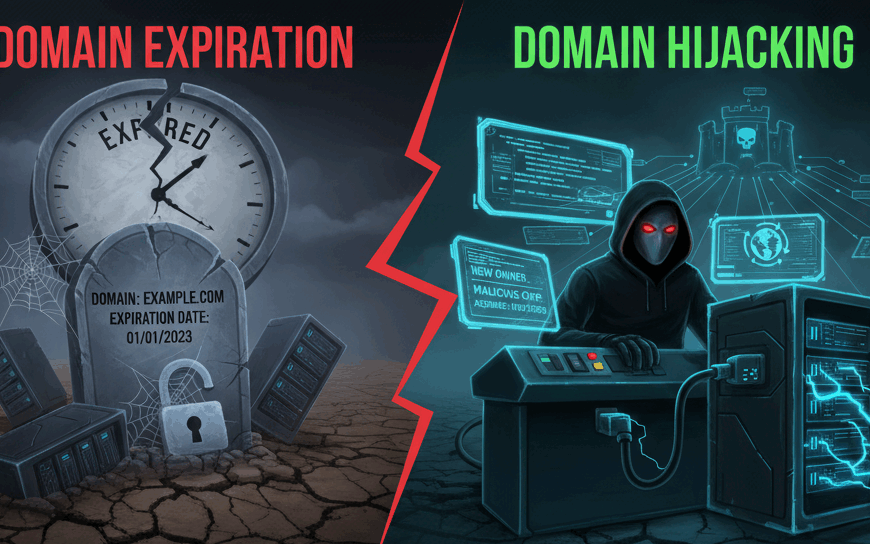Last updated on June 19th, 2025 at 11:09 am

You think your favourite artist is making a fortune from millions of streams? Think again. The brutal reality of streaming revenue will shock you to your core.
Music streaming in the UK brings in more than £1 billion in revenue with 114 billion music streams in the last year.
Artists can be paid as little as 13% of the income generated.
While platforms and record labels pocket most of the money, the creators who make the magic happen get scraps from the table.
This isn’t just about numbers on a spreadsheet. This is about your favourite British artists struggling to pay rent while their songs soundtrack your daily life.
The streaming revolution promised to democratise music, but it’s created a system more unfair than ever before.
The Shocking Reality of UK Streaming Revenue
The numbers will make your blood boil.
The UK recorded music market achieved a decade of continuous growth in 2024 with revenues rising by 4.8% to £1.49 billion.
Yet the people creating this music see barely a penny of this massive pie.
| Platform | Pay Per Stream | Streams Needed to Earn UK Minimum Wage (1 Week) |
|---|---|---|
| Spotify | £0.003 – £0.004 | ~250,000 |
| Apple Music | £0.007 – £0.01 | ~100,000 – 140,000 |
| YouTube Music | £0.001 – £0.003 | ~330,000 – 1,000,000 |
The maths is devastating.
A British artist needs 3.5 million streams annually on Spotify to match the average UK salary of £35,000.
Most artists never reach these numbers, leaving them dependent on live performances and merchandise sales to survive.
Platform Payout Breakdown: The Harsh Numbers
Here’s what each platform pays per stream in 2025:
| Streaming Platform | Pay Per Stream (GBP) |
|---|---|
| Spotify | £0.002 – £0.003 |
| Apple Music | £0.005 – £0.008 |
| YouTube Music | £0.0008 – £0.002 |
| Amazon Music | £0.003 |
| Tidal | £0.008 |
These rates fluctuate based on subscription vs. free tier usage, geographical location, and market conditions.
Free tier streams pay significantly less than premium subscriptions.
Who’s Actually Getting Rich from Your Streams

The streaming revenue pie gets carved up before artists even see a slice.
Streaming services like Spotify and Apple Music retain 30% of their revenue, with the remaining 70% paid to the music industry. But here’s where it gets ugly.
Record labels take the lion’s share of that 70%. Major labels negotiate deals giving them 50-85% of streaming revenue from their artists.
Independent artists without label support keep more per stream but lack the marketing muscle to generate significant plays.
Publishing companies grab another chunk for songwriting royalties. Distribution platforms like CD Baby and DistroKid take their fees.
By the time money reaches the artist, they’re lucky to see 10-20% of the original streaming revenue.
The Real Winners in Streaming Revenue
Platform Executives: Spotify’s CEO Daniel Ek earned over $50 million annually while paying artists fractions of pennies per stream.
Major Record Labels: Universal Music Group, Sony Music, and Warner Music Group control 70% of the UK streaming market and negotiate the most favourable deals.
Publishing Giants: Companies owning song catalogues earn more from streaming than the artists who perform them.
UK Parliamentary Inquiry: Government Steps In
The situation became so dire that the UK Parliament launched an official inquiry.
Artists must be given a legal right to a fairer share of revenues from streaming, the DCMS Committee concludes, following a wide-ranging inquiry that calls for a complete reset of the market.
MPs discovered that while streaming revenue soared, artist payments remained stuck in the stone age.
The inquiry revealed how platform algorithms favour major label artists, making it harder for independent UK musicians to build sustainable careers.
The Committee recommended sweeping changes including equitable remuneration rights and better transparency in streaming payments.
However, implementation remains slow while artists continue struggling.
What Parliament Found
The inquiry uncovered these shocking facts:
- Artists earn 13% of total streaming revenue on average
- 99% of UK streams go to just 10% of artists
- Independent artists need day jobs to survive despite millions of streams
- Streaming platforms profit more from music than the people who create it
Genre Bias: Why Some UK Artists Earn More

Streaming revenue isn’t distributed equally across musical genres.
Pop and hip-hop artists in the UK earn significantly more per stream than classical, jazz, or folk musicians. This happens because mainstream genres generate more playlist placements and algorithmic recommendations.
British classical musicians face particular challenges. Their longer compositions earn the same per-stream rate as three-minute pop songs, meaning they need triple the listening time to match pop artists’ earnings.
This genre bias is reshaping the UK music landscape.
World music and traditional British folk artists suffer similar discrimination. Despite cultural importance, these genres generate lower streaming revenue because algorithms prioritise commercially successful formats.
The Playlist Economy
Spotify’s editorial team controls discovery for millions of UK listeners. Getting onto popular playlists can transform an artist’s career overnight. However, playlist placement often depends on major label relationships rather than musical quality.
Independent UK artists struggle to break through this gatekeeping system. They lack the promotional budgets and industry connections needed to secure playlist spots, creating a vicious cycle of low visibility and poor streaming revenue.
Regional Differences: London vs. the Rest
Streaming revenue distribution varies dramatically across the UK. London-based artists benefit from industry proximity and networking opportunities.
Musicians in Scotland, Wales, and Northern England face additional barriers to streaming success.
Currency exchange rates affect international streaming revenue. When UK artists stream in markets with weaker currencies, their per-stream earnings decrease. This global disparity hits smaller UK artists hardest.
The concentration of music industry infrastructure in London creates regional imbalances.
Artists outside major cities struggle to access the resources needed to maximise streaming revenue, perpetuating geographical inequality.
The Subscription vs. Free Tier Divide
Your choice between premium and free streaming subscriptions directly impacts artist payments. Premium subscriptions generate roughly 5-10 times more revenue per stream than ad-supported free tiers.
The market share payment system based on an artist’s share of total streams.
For instance, if an artist’s streams make up 2% of the platform’s total, they receive 2% of the revenue pool for that period.
This system means popular artists subsidise smaller ones, but also concentrates wealth among streaming’s biggest winners.
Free tier users vastly outnumber premium subscribers in many UK demographics. This means artists popular with younger, price-conscious audiences earn less per fan than those appealing to affluent subscribers.
The Hidden Cost of Free Music
Free streaming isn’t really free for artists. Ad-supported streams pay so little that artists need millions of plays to earn meaningful income.
Many UK artists lose money on free streams after accounting for production and marketing costs.
The psychological impact is devastating. Artists see impressive streaming numbers but receive payments that barely cover a coffee.
This disconnect between perceived success and financial reality damages mental health across the UK music community.
Emerging Alternatives: Hope for UK Artists
Fan-powered royalty systems offer hope for fairer streaming revenue distribution. SoundCloud’s model pays artists based on individual listener behaviour rather than total platform streams.
This means dedicated fans directly support their favourite UK artists.
Bandcamp continues championing artist-friendly revenue splits. Their monthly Bandcamp Fridays waive platform fees, directing more money to musicians.
Many UK artists use Bandcamp to supplement streaming income with direct fan purchases.
Blockchain-based platforms promise transparent, automated royalty payments. While still experimental, these systems could eliminate intermediaries taking cuts from streaming revenue.
Direct Fan Support Models
Patreon allows UK artists to build subscription-based income streams. Fans pay monthly amounts for exclusive content, creating predictable revenue streams independent of streaming platform whims.
Crowdfunding platforms help artists finance recordings without label interference. Successful campaigns often generate more money than years of streaming revenue, highlighting how broken the current system has become.
What You Can Do to Support UK Artists
Your listening habits directly impact streaming revenue distribution. Choosing premium subscriptions over free tiers increases artist payments. Playing full songs rather than skipping helps artists earn more from your streams.
Buy music directly from artist websites when possible. Physical sales and digital downloads typically provide better artist margins than streaming revenue.
Concert tickets and merchandise sales also support artists more effectively than streams.
Share discoveries on social media to help UK artists reach new audiences.
Algorithmic promotion favours engagement, so your likes and shares can boost artist visibility and streaming revenue.
Conscious Streaming Choices
Consider these platforms for better artist support:
- Bandcamp: Highest artist revenue share
- Tidal: Markets itself as artist-friendly
- Apple Music: Pays more per stream than Spotify
- Direct purchases: Always best for artists
Follow UK artists on multiple platforms to support their algorithmic rankings.
Streaming platforms interpret cross-platform engagement as audience quality signals, improving artist promotion prospects.
The Future of UK Streaming Revenue
Government intervention may force streaming platforms to share revenue more fairly. The UK government’s work on music streaming continues monitoring the situation, though concrete changes remain limited.
Technological innovations could disrupt current streaming models. AI-powered music creation raises questions about human artist value. Meanwhile, virtual and augmented reality platforms may create new revenue streams for UK musicians.
The industry stands at a crossroads. Either streaming revenue becomes more equitable, or we’ll lose an entire generation of UK musical talent to financial impossibility. The choice lies with consumers, platforms, and policymakers working together.
Making Streaming Work for Artists
The solution requires multiple approaches:
- Platform reform: Fairer revenue splits and transparent payments
- Government regulation: Legal protections for artist rights
- Consumer awareness: Understanding the impact of streaming choices
- Industry innovation: New models prioritising creator welfare
Take Action & Support UK Music Today
The streaming revenue crisis threatens the future of British music. Without change, you’ll lose access to the diverse, innovative artists who make the UK’s musical landscape unique.
Support independent UK artists by buying their music directly. Attend live shows when possible. Share their content to help algorithmic discovery. Every action you take can help level the playing field against corporate music monopolies.
The power to fix streaming revenue inequality lies in your hands. Use it wisely, and help ensure UK artists can continue creating the music you love.
Discover more about supporting creative industries at True Host UK by hosting your website or buying a domain.
Your next stream could make the difference between an artist continuing their career or giving up their dreams. Choose platforms and behaviours that support the creators who soundtrack your life.



